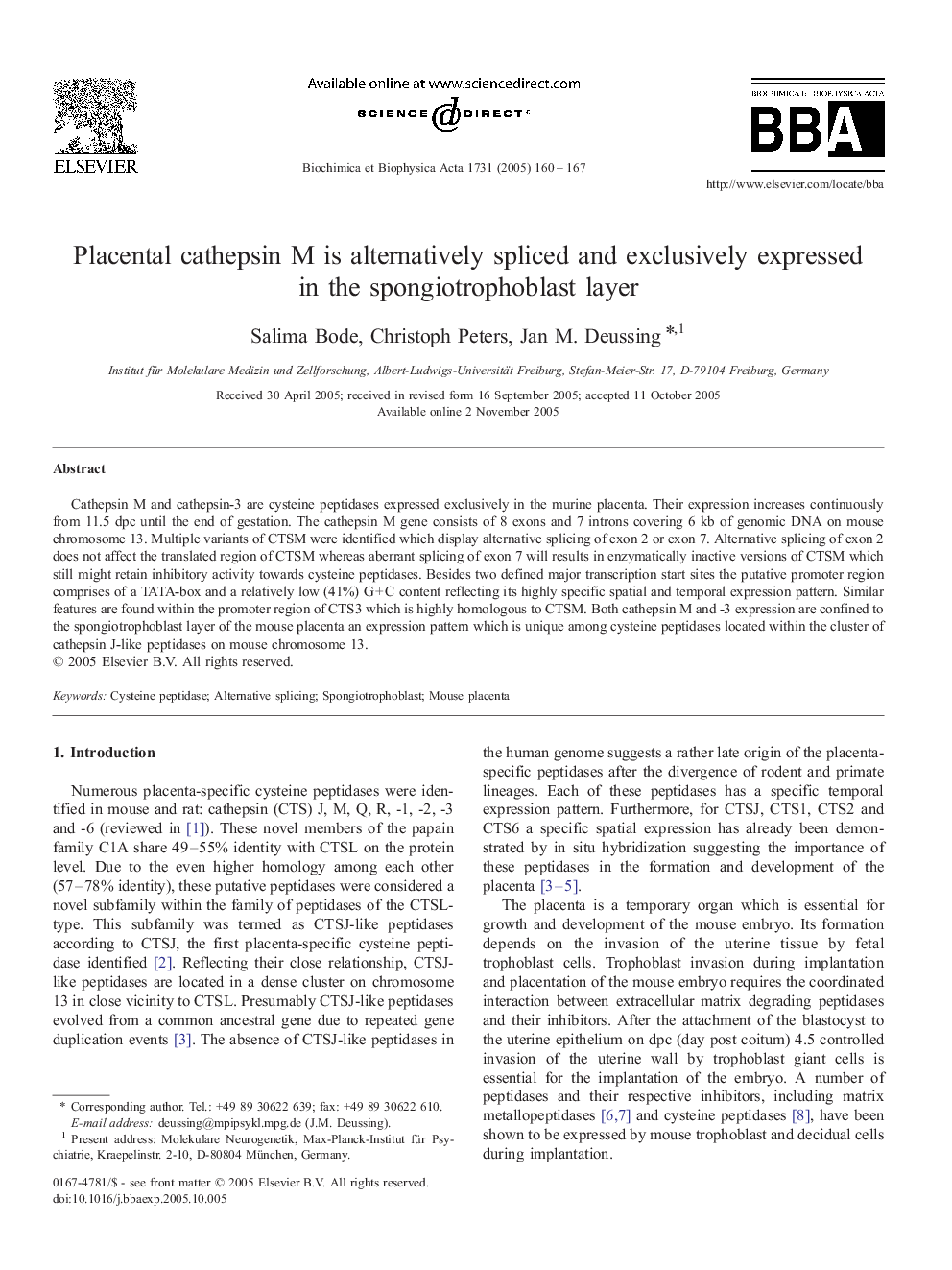| Article ID | Journal | Published Year | Pages | File Type |
|---|---|---|---|---|
| 9885527 | Biochimica et Biophysica Acta (BBA) - Gene Structure and Expression | 2005 | 8 Pages |
Abstract
Cathepsin M and cathepsin-3 are cysteine peptidases expressed exclusively in the murine placenta. Their expression increases continuously from 11.5 dpc until the end of gestation. The cathepsin M gene consists of 8 exons and 7 introns covering 6 kb of genomic DNA on mouse chromosome 13. Multiple variants of CTSM were identified which display alternative splicing of exon 2 or exon 7. Alternative splicing of exon 2 does not affect the translated region of CTSM whereas aberrant splicing of exon 7 will results in enzymatically inactive versions of CTSM which still might retain inhibitory activity towards cysteine peptidases. Besides two defined major transcription start sites the putative promoter region comprises of a TATA-box and a relatively low (41%) GÂ +Â C content reflecting its highly specific spatial and temporal expression pattern. Similar features are found within the promoter region of CTS3 which is highly homologous to CTSM. Both cathepsin M and -3 expression are confined to the spongiotrophoblast layer of the mouse placenta an expression pattern which is unique among cysteine peptidases located within the cluster of cathepsin J-like peptidases on mouse chromosome 13.
Related Topics
Life Sciences
Biochemistry, Genetics and Molecular Biology
Biochemistry
Authors
Salima Bode, Christoph Peters, Jan M. Deussing,
